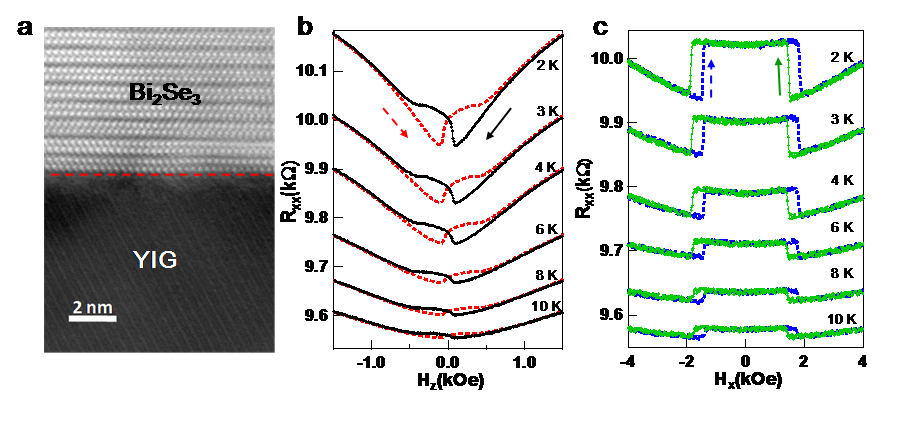Spin-orbit Coupling Exploration
The main focus is on the exploration spin-orbit coupling effects in heterostructures and new highly correlated spin states for spin current transport.Heterostructures consisting of magnetic metals/insulators and heavy metals or topological insulators (TI) will be prepared for studying highly efficient spin-orbit torque and spin transfer torque driven oscillators. In TI/magnetic insulator heterostructures, the proximity effect (figure below) induces magnetization in TI’s surface states that can lead to a unique dissipationless quantum state, i.e. the quantized anomalous Hall state. In metallic FM/NM multilayer structures with perpendicular magnetic anisotropy, the spin transfer torque can produce large-angle magnetization precession which generates large oscillator signal output. These phenomena will be studied by Wang and Krivorotov.
(a) High-angle annular dark field images of YIG/Bi2Se3 interfaces. (b) The butterfly shaped magnetoresistance hysteresis loops by magneto-transport measurements with out-of-plane and in-plane fields, respectively.
In addition, other highly correlated spin states can offer unique and attractive advantages for spin current transport. Theme 3 will explore the spin condensates in easy-plane ferromagnets (Wang and Krivorotov) and in few-layer graphene (Lau) in both experiments and theory (MacDonald).
Theme 3 members will collaborate with other members in SHINES on the preparation of spin-orbit coupling materials and devices (Chien), micromagnetic simulations (Lake), growth of easy-plane magnetic materials (Shi), and characterization of layered materials (Balandin).
Members: Wang, Krivorotov, Lau, and MacDonald
Cross members: Chien , Lake, Shi, and Balandin
